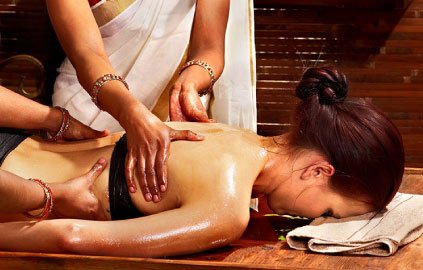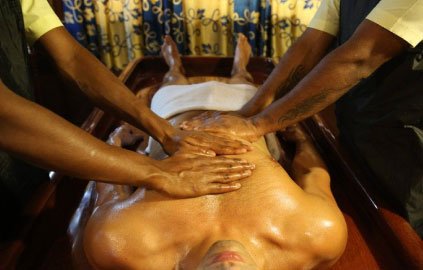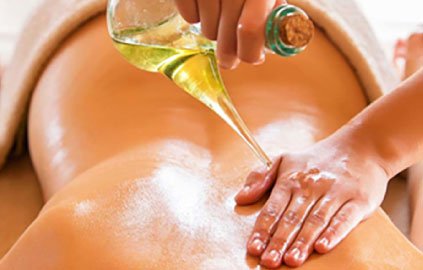

Oil Massage
Abhyanga
Abhyanga is a traditional Ayurvedic practice of self-massage using warm herbal oils. This therapeutic massage is performed to promote overall well-being and balance the body’s energies. “Abhyanga” comes from the Sanskrit word “Abhi,” meaning “to or towards,” and “Anga,” meaning “limb or body,” symbolizing the act of massaging the body with oils to restore vitality and balance.




Abhyanga offers numerous health benefits, making it a cornerstone of Ayurvedic therapy. Some of the key benefits include:
- Improves Circulation: The gentle massage stimulates blood flow, helps to detoxify the body and improves oxygen delivery to tissues.
- Promotes Relaxation: Reduces stress and anxiety by calming the nervous system.
- Enhances Skin Health: Regular use of oils nourishes the skin, making it soft, supple, and glowing.
- Detoxifies the Body: Eliminates the toxins by promoting lymphatic drainage.
- Balances the Doshas: Restores the balance to the body’s three doshas, supporting overall health.
- Relieves Pain and Stiffness: The massage alleviates muscle tension, pain, and stiffness, making it effective for joint health.
- Boosts Immunity: Regular practice strengthens the immune system by improving the functioning of various bodily systems.
- Stress and Anxiety
- Muscle and Joint Pain
- Insomnia
- Digestive Disorders
- Skin Conditions (e.g., dry skin, eczema, psoriasis


Performing Abhyanga can be a calming and nourishing ritual. Here’s a step-by-step guide to doing it at home:
- Choose the Right Oil: Select an Ayurvedic oil based on your dosha (body constitution). For Vata, use sesame oil; for Pitta, coconut or olive oil; and for Kapha, mustard or almond oil.
- Warm the Oil: Heat the oil slightly until it is warm, not hot. This helps to open up the pores and allows the oil to be absorbed more effectively.
- Start from the Head: Begin by massaging the scalp gently with your fingertips, moving in circular motions. This stimulates hair follicles and calms the mind.
- Massage the Body: Apply the oil generously to your body, starting from the head, neck, and shoulders. Work your way down to the limbs, chest, abdomen, and back. Use long strokes on the limbs and circular strokes on joints and the abdomen.
- Use Gentle Pressure: Use moderate pressure during the massage to promote relaxation without causing discomfort.
- Allow Time for Absorption: After the massage, allow the oil to absorb into your skin for at least 20-30 minutes before bathing.
- Take a Warm Bath: Wash off the excess oil with warm water. You may use an herbal soap to cleanse the skin, leaving it soft and nourished.
